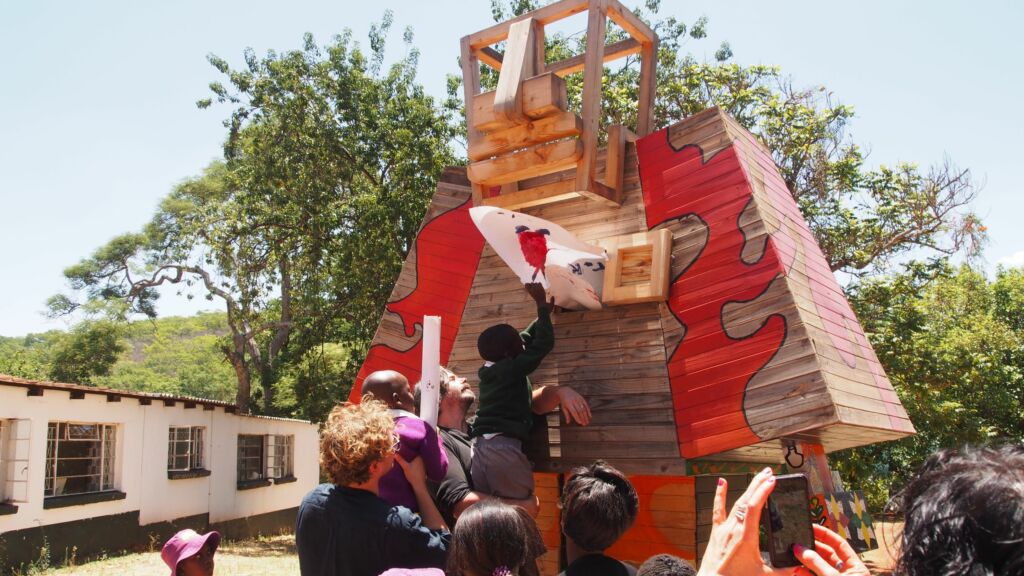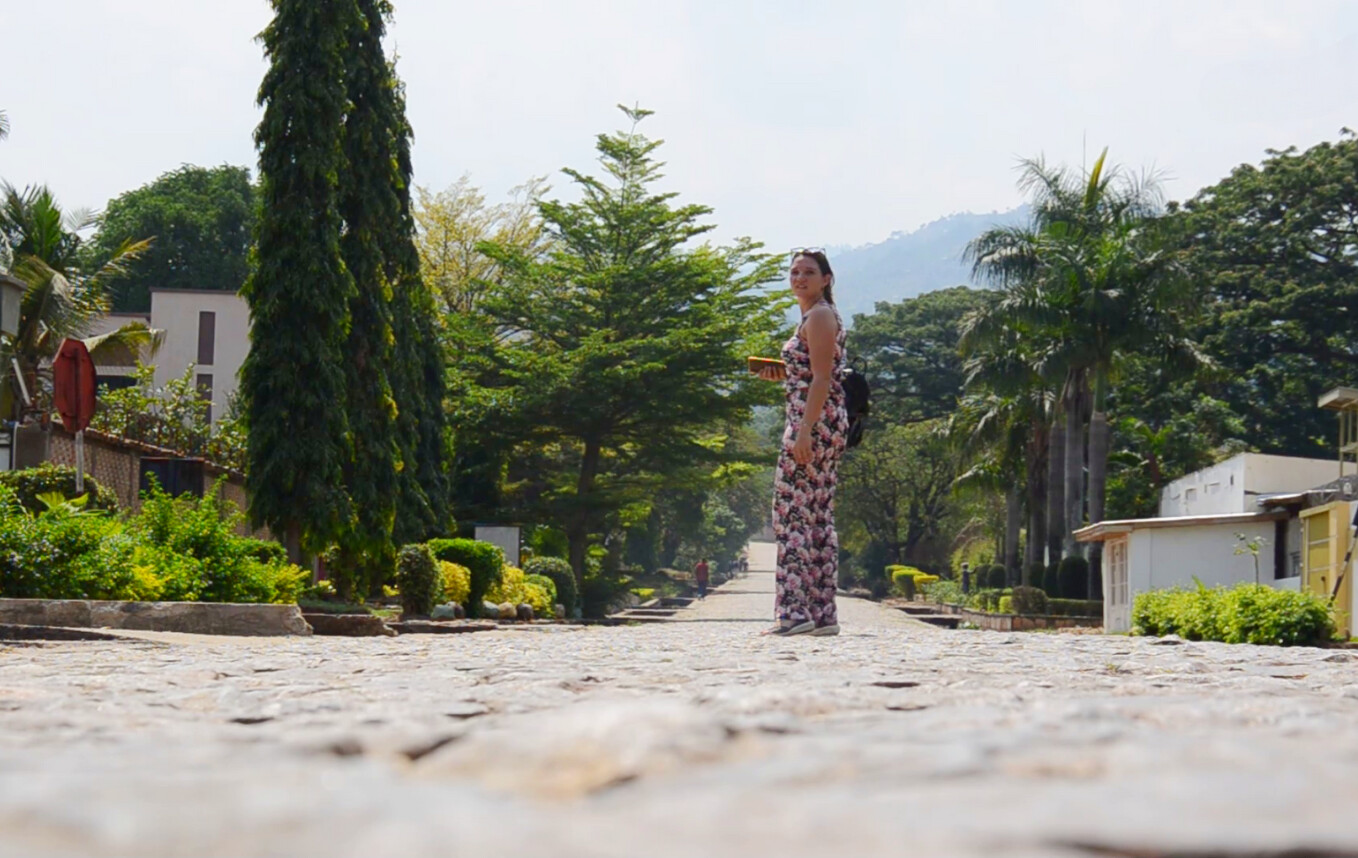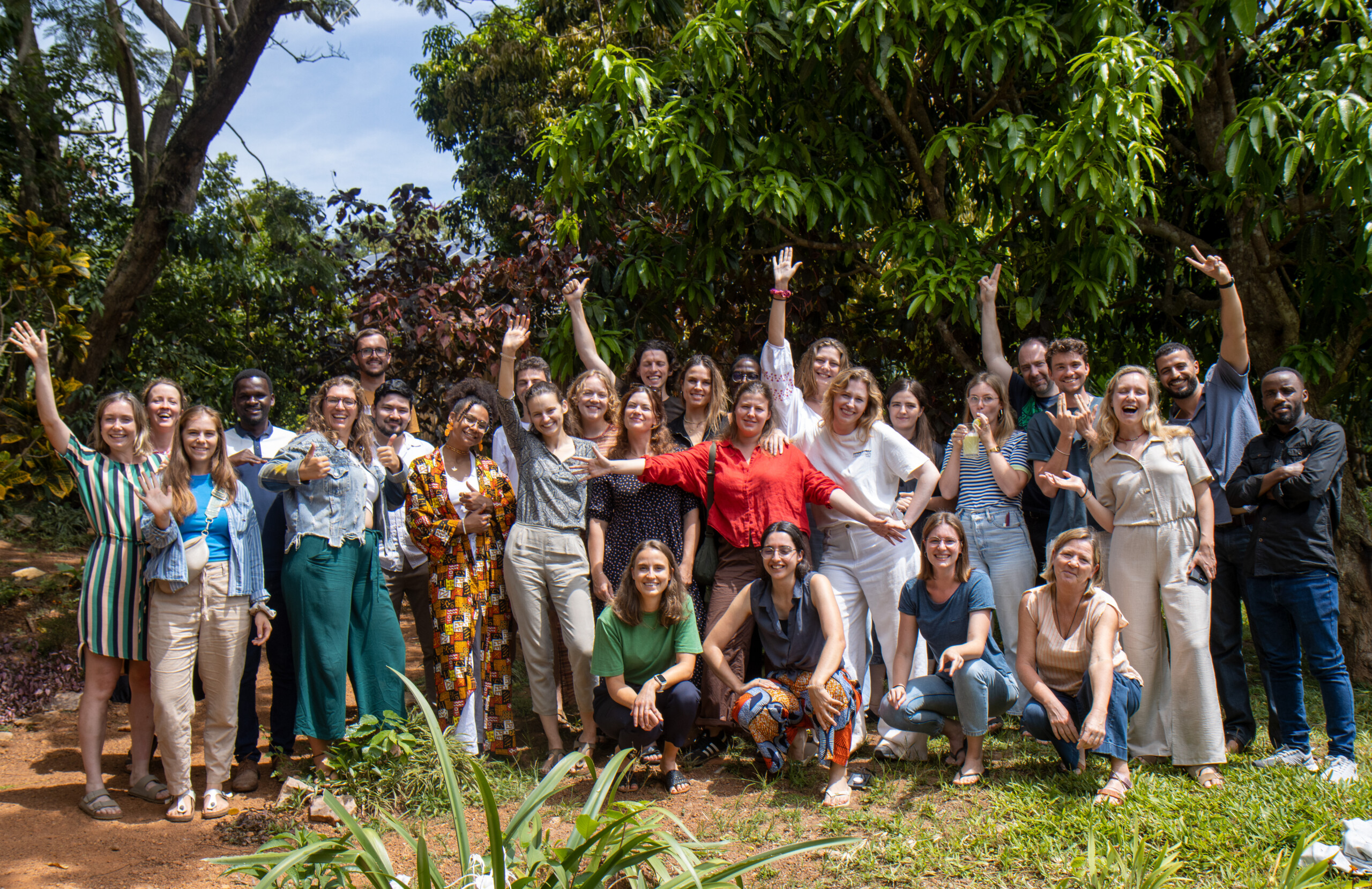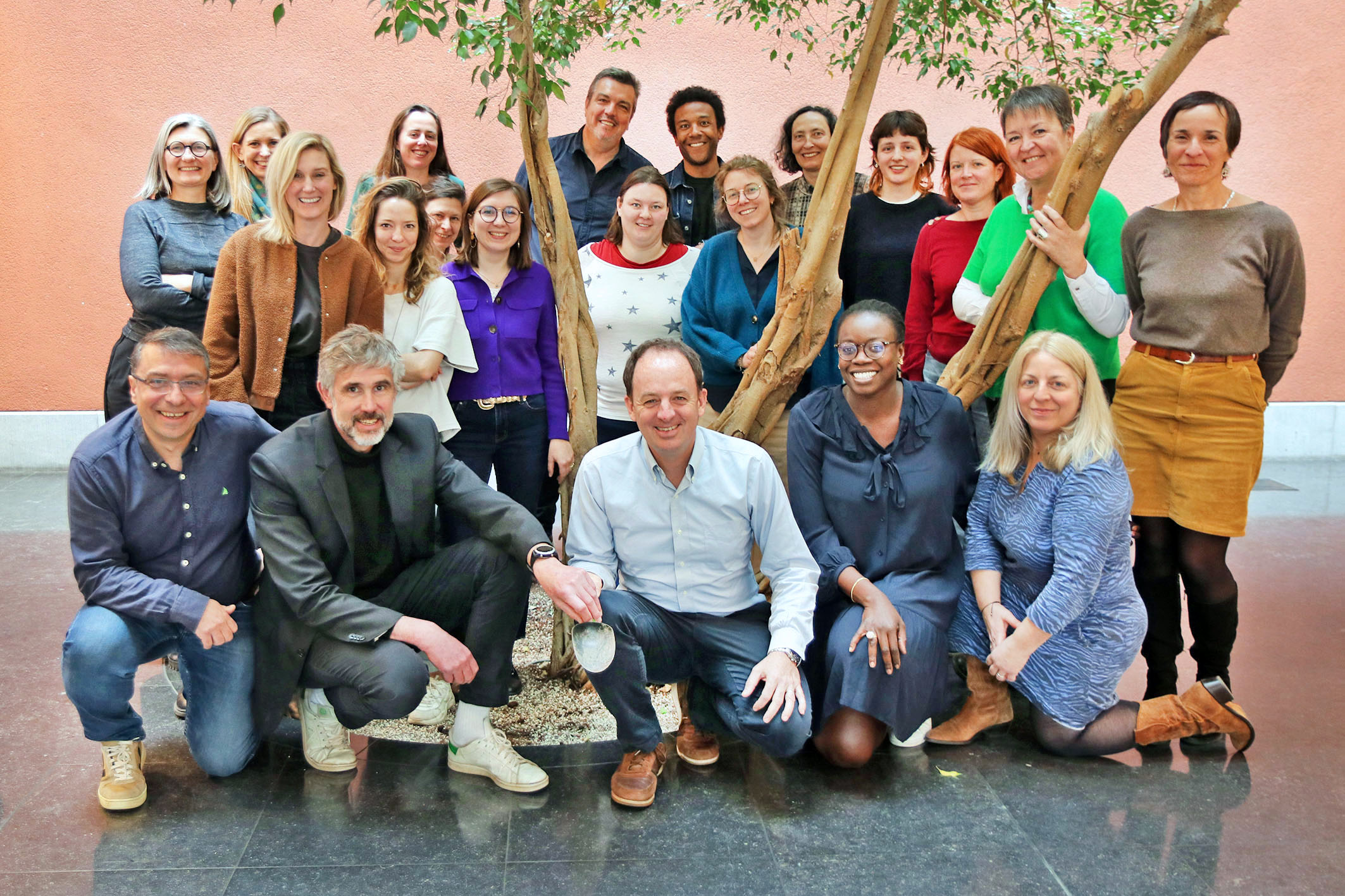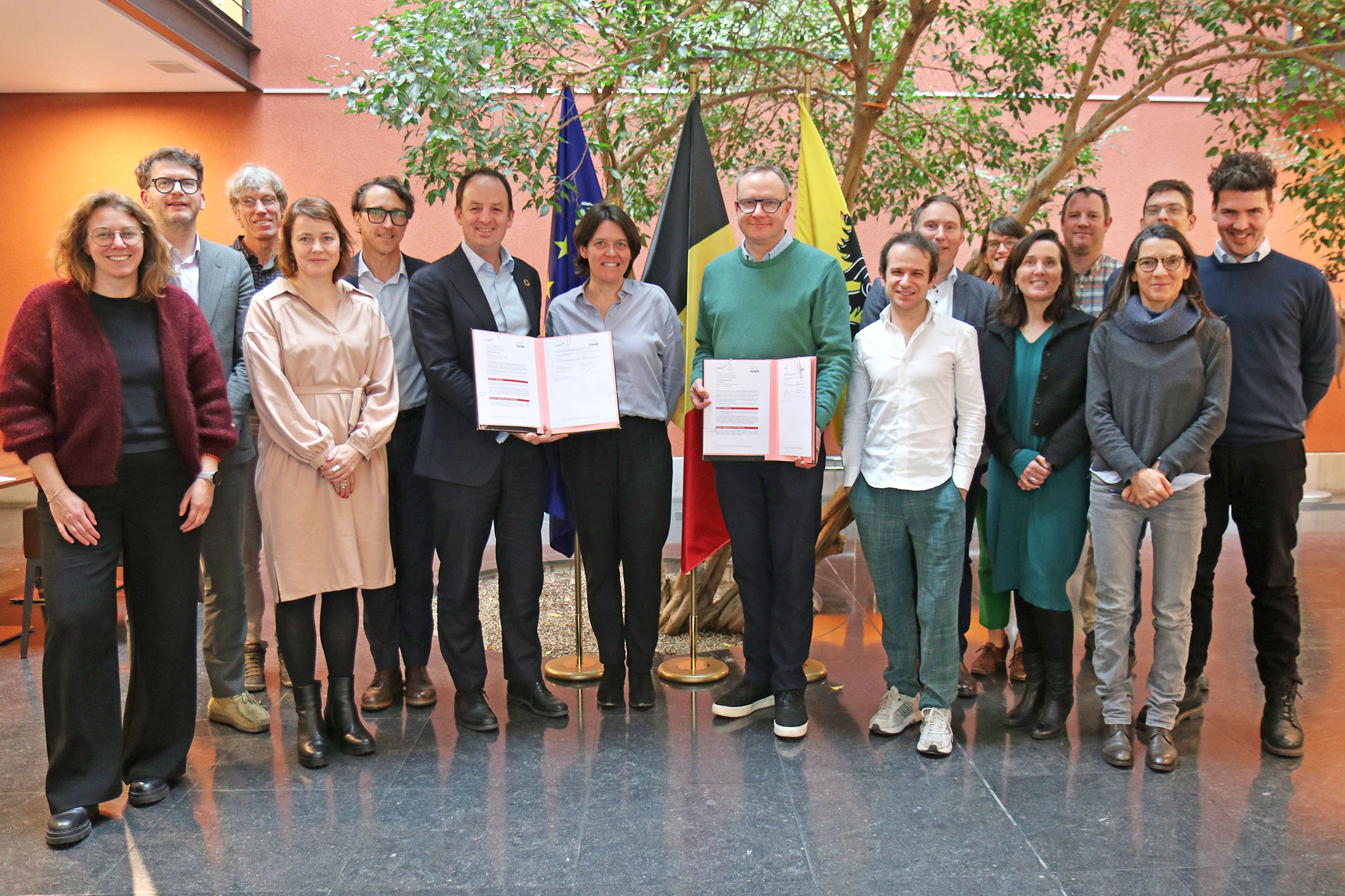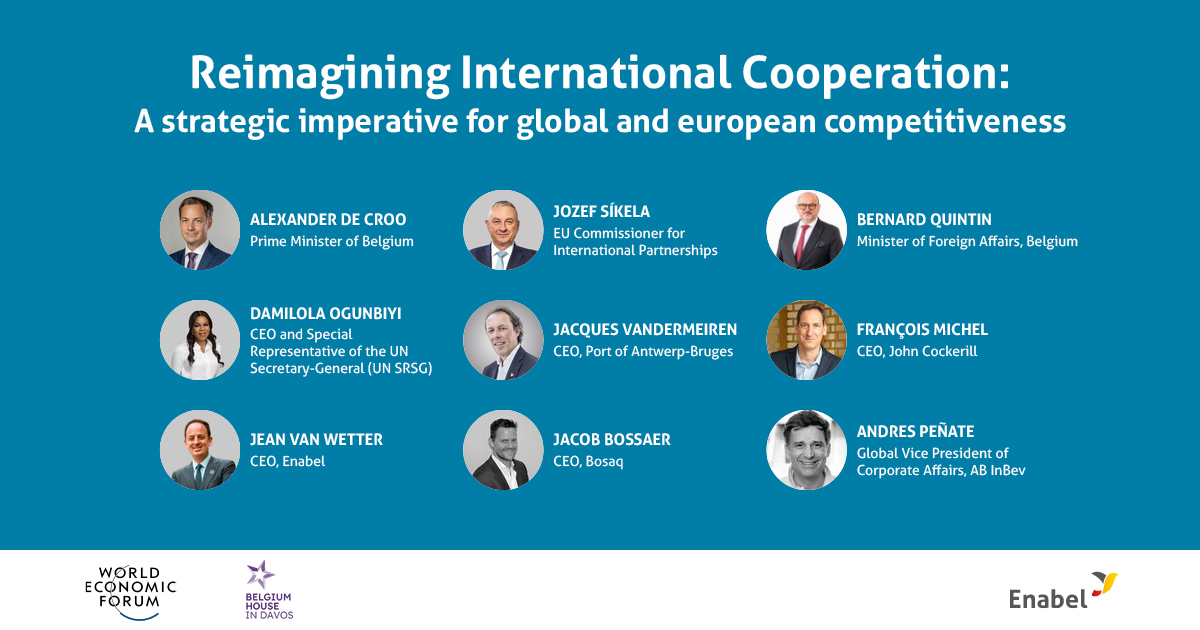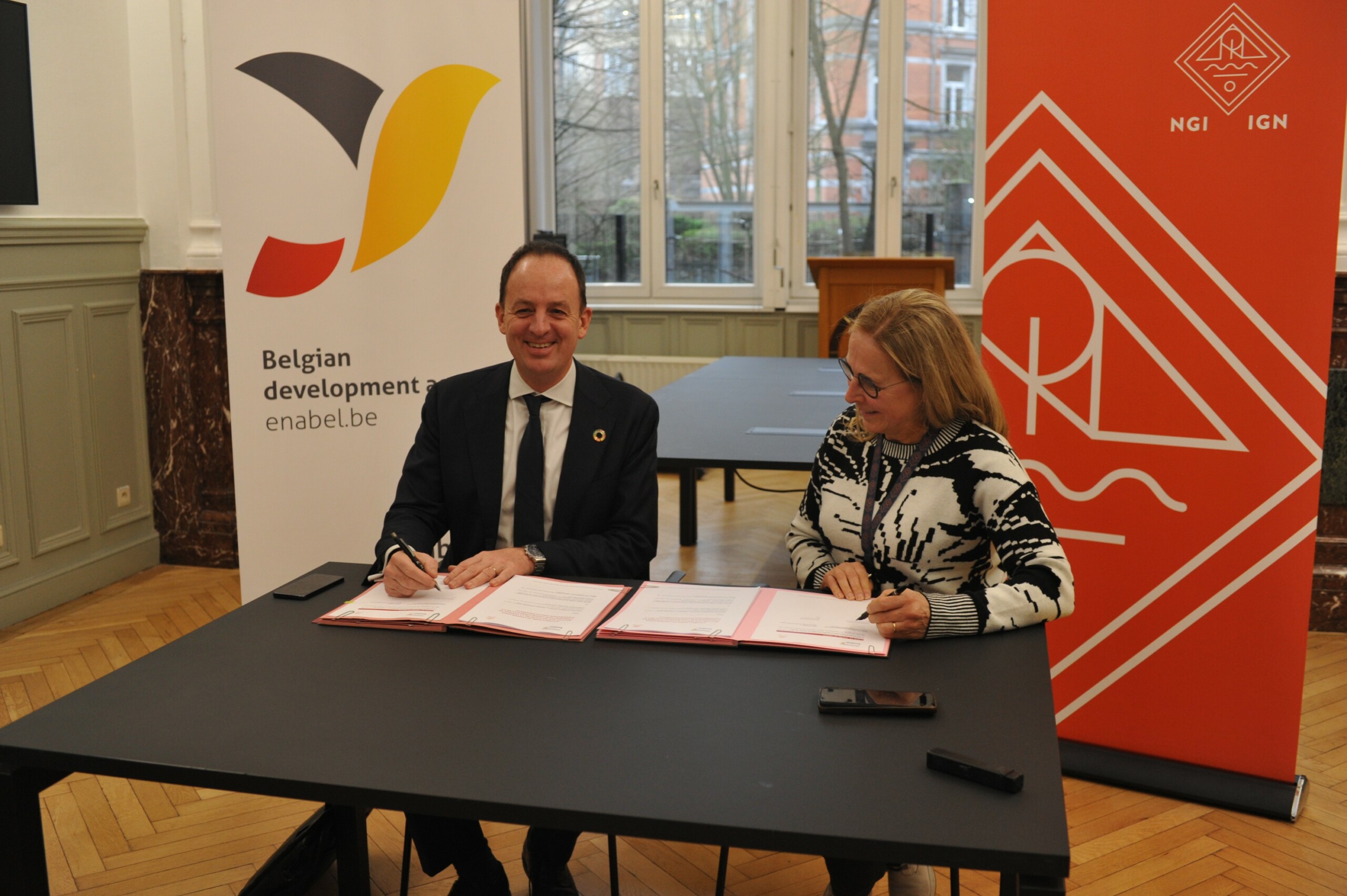Koen Vanmechelen builds Cosmogolem in Rwanda
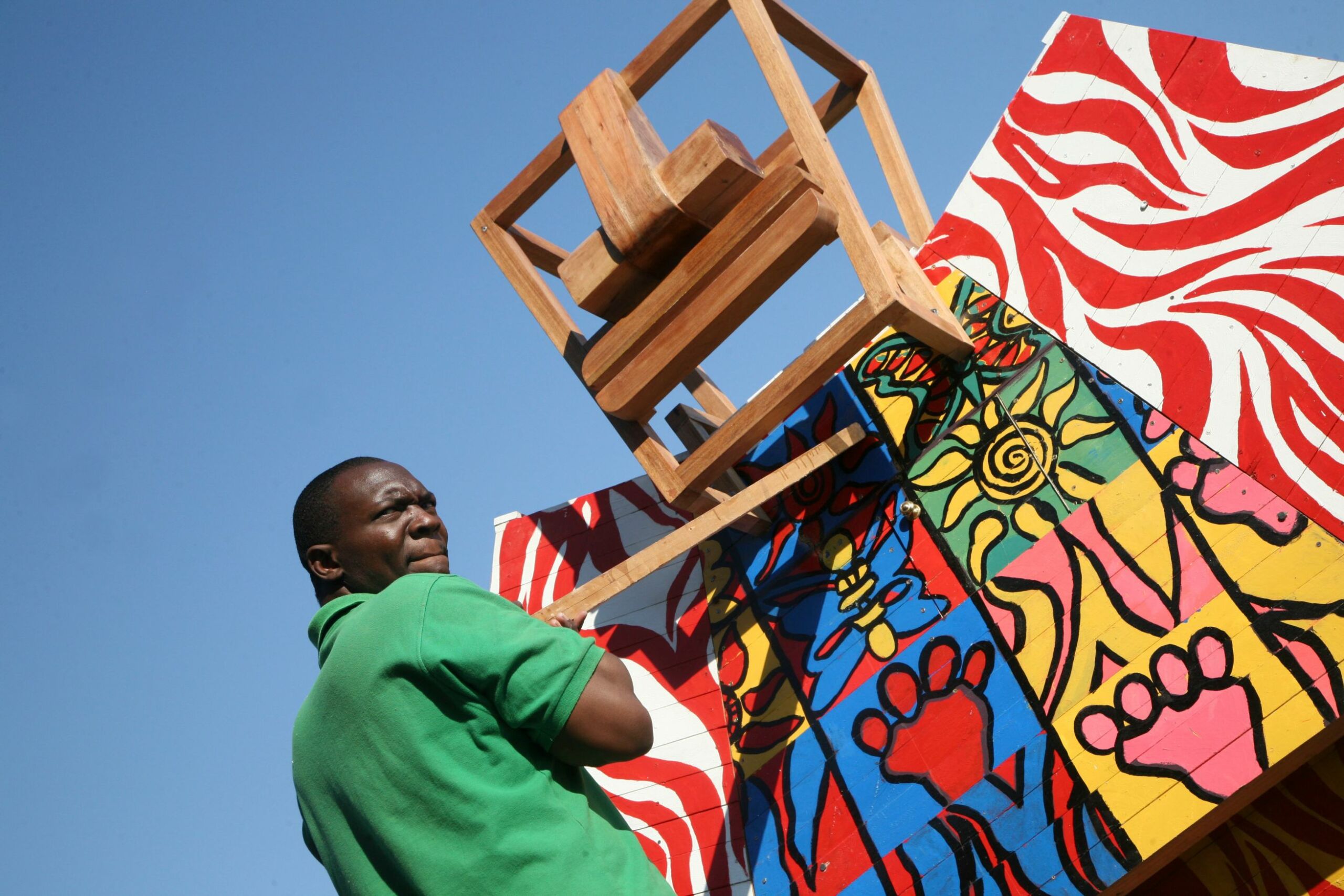
As in the rest of the world, urbanisation is ongoing in Rwanda. It is expected that by 2050, 70% of Rwanda’s population will live in cities (up from 18% in 2015). Urbanisation is challenging, but it also offers opportunities to create jobs and drive economic development.
Rubavu, Musanze and Rwamagana are emerging cities with great economic potential thanks to tourism, fertile farmland or the proximity to larger cities such as Kigali and Goma (DRC). Together with local governments, Enabel looks for solutions to manage urban development. Involvement of the local population is key to this approach.
Musanze is a mountain town in northern Rwanda, near the Congolese border. It is the gateway to the famous Virunga Park, home to mountain gorillas. Together with the city council, Enabel is building a youth centre in Musanze, which will be officially opened in September 2023. The inauguration of a Cosmogolem, a wooden sculpture by Belgian artist Koen Vanmechelen, is the cherry on the cake. Reason enough for an interview, we thought.
What exactly is a Cosmogolem?
Koen Vanmechelen: The Cosmogolem is a large 4-metre-high wooden giant with an open head, large hands and feet, a hollow body and a hatch at the level of the heart. I impulsively created the construction when I was 17. At the time, I was already fascinated by nature and chickens, and I hammered something together with boards and beams that I had salvaged from an old chicken coop. From this came a sculpture, which I left unattended for years, but which actually already had the philosophy of my work in it.
Freedom can only be achieved when we build a construction around it. That is the contradiction we live with continuously. It is linked to the ever-lasting debate between nature and domestication. A work of art is a prison seeking to lead to liberation. That was my initial artistic activity. The wooden sculpture gave me a huge philosophy as a gift without my knowing it. That, in my opinion, is art. Meanwhile, we are more than 30 years later and the Cosmogolem has become a global project that helps young people find their own voice and identity. It is a symbol of hope and evolution in the world.
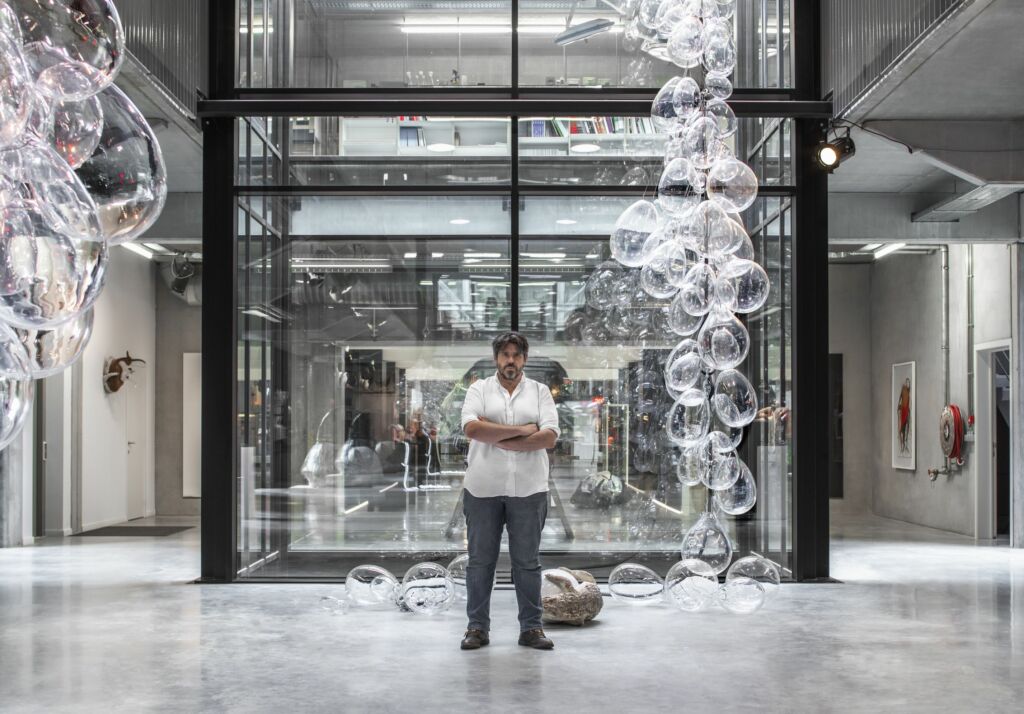
Meanwhile, there are more than 40 Cosmogolems in the world: in Belgium, the Netherlands, India, Ecuador, Peru, Chile, Tanzania, Poland, Zimbabwe, Mexico… How did the Cosmogolem embark on this global journey and how did it get to Rwanda?
Koen Vanmechelen: Well, I thought: ‘That sculpture has given me so much freedom… Why not take it out and offer it to young people, so they can have their voices heard?’ I allowed the sculpture to evolve and mature. I opened the head, added a hatch at the level of the heart, tackled the torso, the hands and the feet. So it evolved into an open and receptive sculpture that is to be fed by ideas from young people. I don’t remember how I fell upon its name, but anyway, a golem is a human figure from a Jewish legend, made of clay and brought to life by a rabbi. But I felt that my image was a cosmopolitan figure, hence Cosmogolem. And then the insight came that I needed to take the sculpture to people, to communities. The impetus to go out with it was twofold. I also call it the awareness, the ‘magic’ that happens because something happens.
At some point a school in Maasmechelen in Belgium organised a diversity week. A teacher asked me if I had anything to offer and so I offered the Cosmogolem, which also won us the diversity prize. Then I got a call from Peter Adriaenssens, a well-known Belgian child psychiatrist, who had read about me and asked me to speak at an international conference because he believed in the healing power of the Cosmogolem. He used it in his practice where he treated traumatised children. Jeanne De Vos who was working with vulnerable young people in India at the time and who was nominated for the Nobel Prize a year later attended that conference. That’s how Cosmogolem ended up in India, and the journey has not stopped since. In Rwanda, the wife of the Belgian ambassador, who had been following me for years, put me in touch with the people of Enabel. Both she and Enabel believe in the importance of art for a healthy society and thus in the meaning that the Cosmogolem can have for the urban development project in Musanze. And here we are.
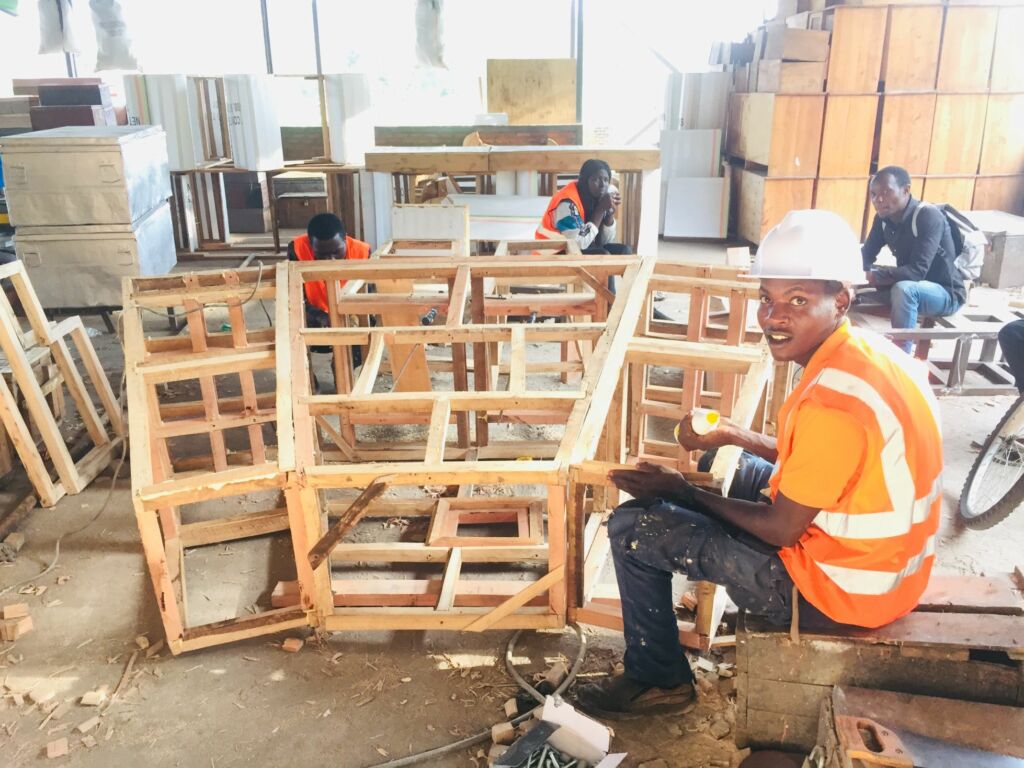
In Musanze, we are building a crafts centre and a youth centre with the local administration. Local artists, carpenters and welders are building the Cosmogolem there according to a detailed plan. How did they feel about this project?
Koen Vanmechelen: I always go wherever the Cosmogolem is being built to feel what it is like there, ‘touch the ground’ so to speak. We met in Kigali with the ambassador, with the people of Enabel and with two people from the arts organisation Rwanda Arts Initiative. They were very sharp and immediately understood what this story is about. We drove to Musanze and talked to locals. What also helped was the fact that the city’s progressive mayor had a vision and was open to working with the youth. And so the people and the elements have come together. There is a crafts centre there, a food market, a youth centre, there is space and people want to make something of it. The conditions are there to create a nest where ideas can incubate. That’s when you know it’s going to happen.
And then the philosophy of the sculpture resurfaces. We build the Cosmogolem in sustainable but perishable materials. If you don’t take care of the Cosmogolem, it will degrade. And I think that’s a good thing. People have to love it, because if you love it, you take care of it. So far, all Cosmogolems are still standing. Except one, on the left bank in Antwerp. That one was unfortunately set on fire and never rebuilt.
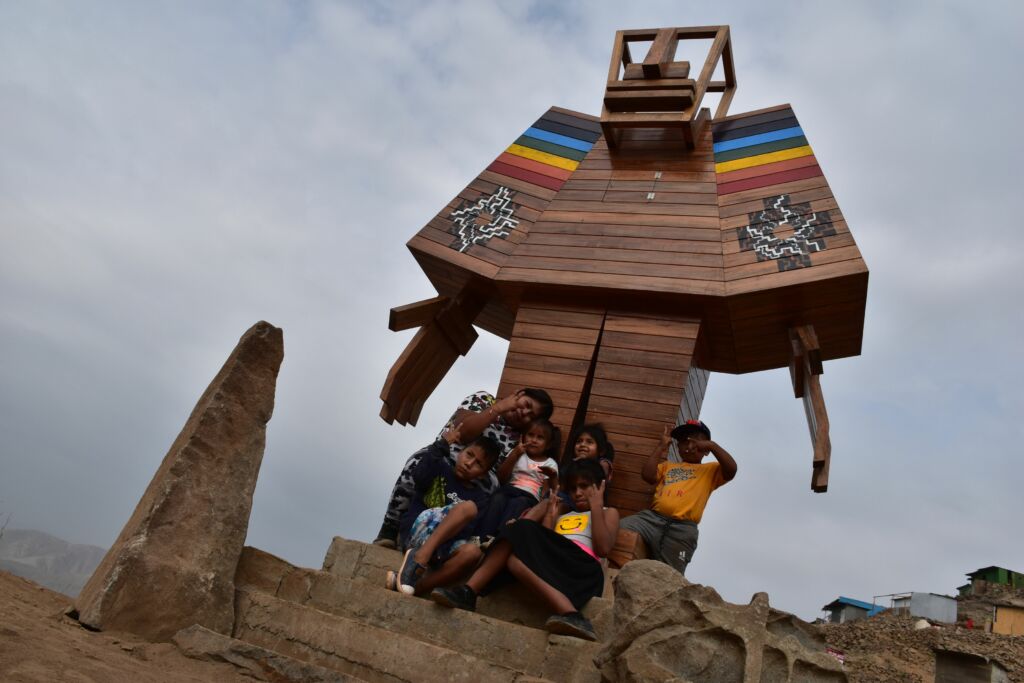
The Cosmogolem is one of your many projects. What often recurs in all your work is cosmopolitanism, diversity and also science. Has that grown organically as well?
Koen Vanmechelen: Looking at my key words, diversity is definitely at the forefront. Without diversity, you’re never going to get to the others. Fertility is also important because that is life as such and that also makes it cosmopolitan. And immunity, building your own immunity, but also the immunity of others. And then of course, it is not just biological immunity, but also mental immunity, people’s resistance and resilience. That’s the circle: fertility, diversity and immunity. This is very artistic for me, very societal and also very scientific.
I am a doctor honoris causa in medicine for my work contributing to medicinal progress. For example, chicken immunity through the Cosmopolitan Chicken Project, in which I started crossing different breeds of chicken to arrive at the cosmopolitan chicken, which is stronger, more diverse and in that sense more productive than most other breeds. Here, fertility, diversity and immunity come together perfectly. Just like the boards and beams of the chicken coop that I used as a 17-year-old lad to make that first Cosmogolem.
The Cosmogolem in Musanze will be officially inaugurated in September 2023. Stay tuned.
More info on the artist: koenvanmechelen.be – labiomista.be
